Dec. 9 to Dec. 15
When architect Lee Chung-yao (李重耀) heard that the Xinbeitou Train Station was to be demolished in 1988 for the MRT’s Tamsui line, he immediately reached out to the owner of Taiwan Folk Village (台灣民俗村).
Lee had been advising Shih Chin-shan (施金山) on his pet project, a 52-hectare theme park in Changhua County that aimed to showcase traditional Taiwanese architecture, crafts and culture. Shih had wanted to build all the structures from scratch, but Lee convinced him to acquire historic properties and move them to the park grounds.
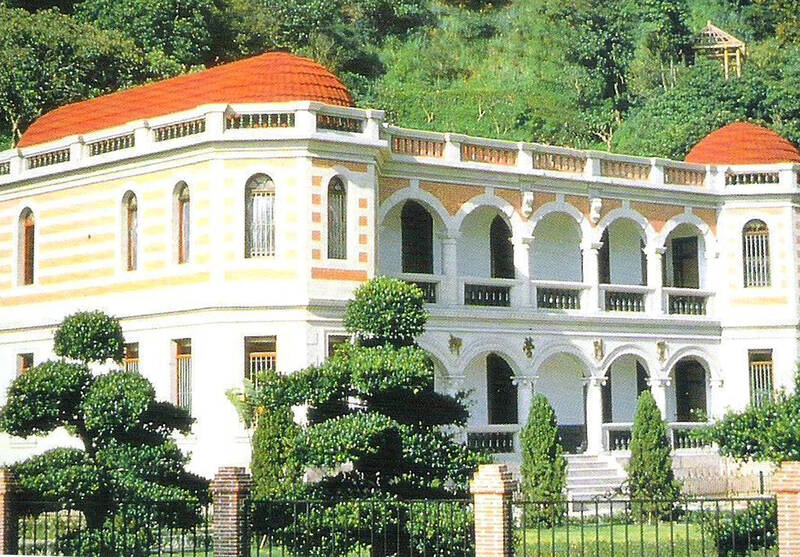
Photo courtesy of Changhua County Cultural Affairs Bureau
Although the Cultural Heritage Preservation Act (文化資產保存法) was passed in 1982, there was still little awareness regarding the value of historic architecture. Private structures were too often demolished to make way for high-rise apartments, and Lee saw this as a way to save them.
Lee facilitated the relocation of several other buildings to the park: Madou Lin Ancestral House (麻豆林厝), Chiayi Liao Clinic (嘉義廖診所), Liuying Liu Mansion (柳營劉氏洋樓) and the Douliu Tsai House (斗六蔡氏一條龍). The CT273 “Queen” locomotive was also housed there.
The park thrived until 1999, then entered a steep decline. The Shih family sold it in 2007, and in 2020 the new owners began demolishing the site without warning or official approval. Three registered historic buildings were saved, but the rest of the site now lies in ruins.
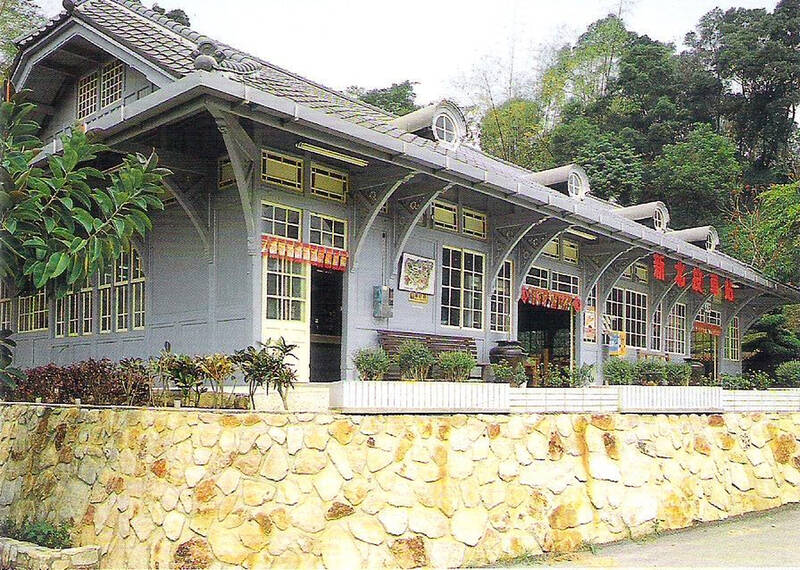
Photo courtesy of Changhua County Cultural Affairs Bureau
SAVIOR OF HISTORIC BUILDINGS
Shih spent years planning the theme park in a bid to promote Taiwanese culture, finally opening it on Dec. 11, 1993. The main entrance and showpiece, “Qingfeng Gate” (慶豐門), was based on the Qing era west gate of Changhua City. It attracted more than 60,000 visitors on the first day.
“Around the world, even less developed countries in Southeast Asia have folk villages. Only Taiwan does not,” states the theme park’s original mission statement. “The establishment of the Taiwan Folk Village will be very meaningful towards maintaining and promoting Taiwan’s traditional culture.”
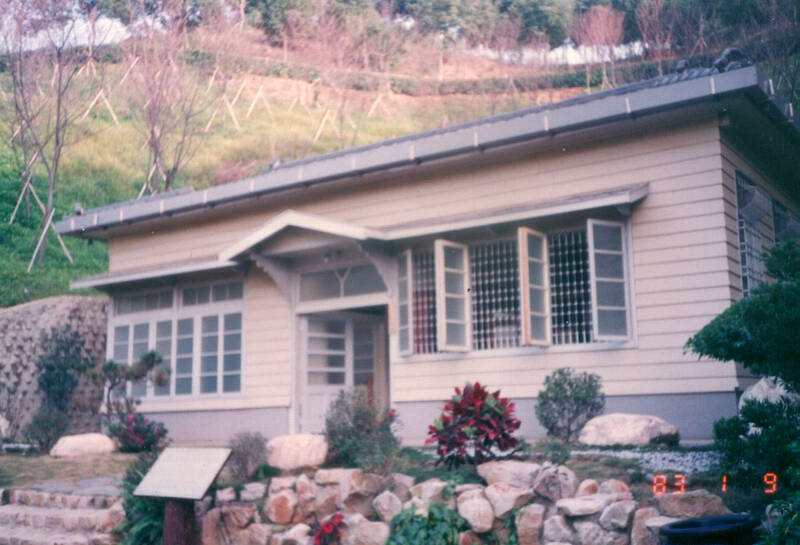
Photo courtesy of Changhua County Cultural Affairs Bureau
In 1994, it was Taiwan’s most visited theme park, and it continued to expand. It was still one of Taiwan’s top attractions in 1998, but business took a massive hit after the 921 Earthquake in 1999.
Lee had much experience in restoring historic buildings; he repaired the Presidential Office after it was damaged by US airstrikes during World War II, and he was also instrumental in saving the Lin An-tai Historic House in Taipei (林安泰古厝, see “Taiwan in Time: Dismantling history, brick by brick,” Oct. 8, 2017).
Lee got the idea for moving historic buildings to the theme park from Japan’s Meiji Mura in Nagoya, which houses nearly 60 such structures, writes Lin Hui (林惠) in Lee Chung-yao’s Architectural Life (李重耀的建築人生). Shih was sceptical at first, but Lee extolled the value of traditional architecture and also promised to keep the costs as low as possible.
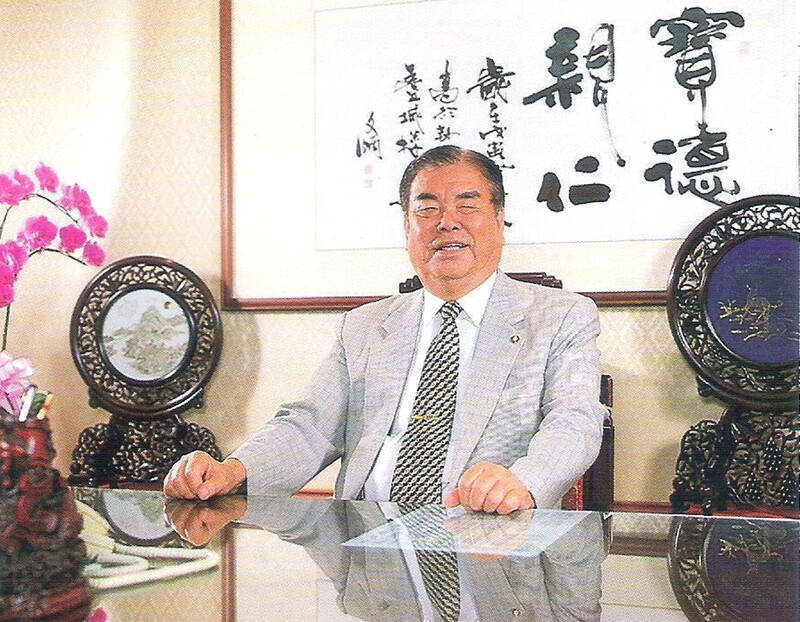
Photo courtesy of Changhua County Cultural Affairs Bureau
Lee was one of Taiwan’s early proponents of repurposing historic structures: “Buildings are constructed for humans, if they are not being used, then they lose their vitality,” he said. “If a structure is managed properly, people will visit it frequently, then those in charge will naturally pay attention to its upkeep. That extends the life of the structure.”
PERSUADING THE OWNERS
Built in 1916, the Xinbeitou Train Station is characterized by the round dormer windows on its roof. It was expanded to its current state in 1937. At Lee’s urging, Shih reached out to the Taipei City Government regarding its acquisition, but officials turned down the proposal as they were worried about being seen as colluding with private businesses.
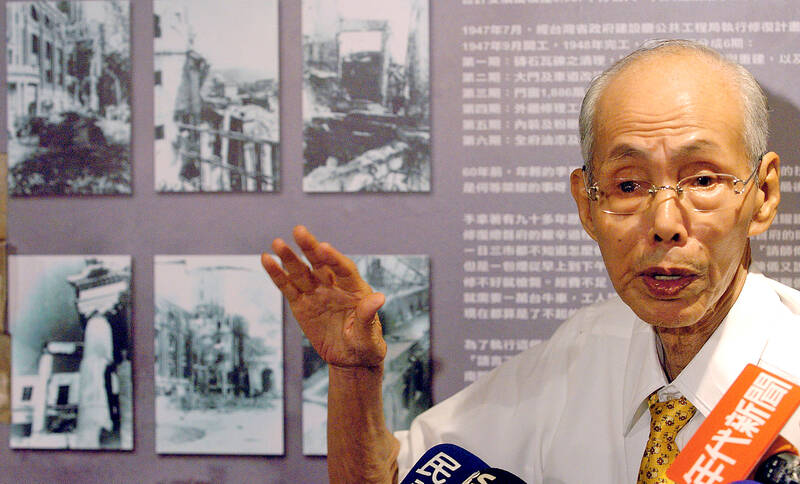
Photo: Chang Chia-ming, Taipei Times
Lee then met with Department of Transit Systems head Chi Pao-cheng (齊寶錚) and promised not to charge the department a single dollar if they let him carry out the removal. He also told them they could put on exhibitions at the theme park at no cost. The building was then moved without a hitch.
After the smooth experience with the train station, Lee and his son traveled across Taiwan searching for old buildings that were about to be torn down. One day, a friend invited him to travel to Tainan’s Madou District (麻豆) to help appraise the value of some antiques.
Turns out, five brothers were planning to demolish their ancestral house for an apartment building and were looking to sell off anything of value. The building was constructed in 1875 by the Madou Lin family, one of the “three Lin families” during the Qing era along with the Banciao and Wufeng Lins.
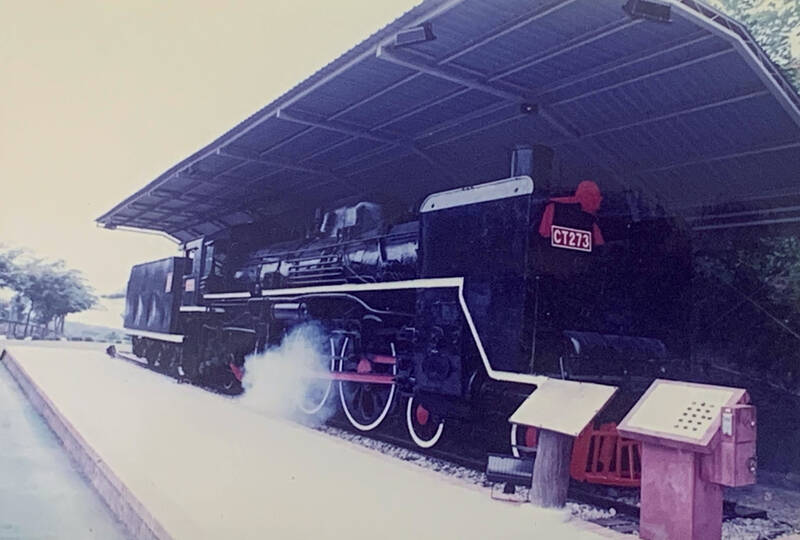
Photo courtesy of Changhua County Cultural Affairs Bureau
Lee was mesmerized by the well-preserved house and began persuading the owners not to sell the antiques nor tear down the house — much to the astonishment of his friend.
Lee told the owners that in traditional culture, selling off one’s ancestral property was considered taboo, and to avoid being judged by society, it was a better idea to let them move it to Taiwan Folk Village.
“We’ll be in charge of the upkeep and repairs, and you all will be lifetime VIPs of the park. No matter how far into the future, your descendants can still visit anytime to see your ancestral house,” he said. The owners agreed, as it was favorable to all their needs.
RAZING THE VILLAGE
Although this sort of relocation and reconstruction was not exactly the best method, it was the best Lee could do at a time when private historic structures had no legal protection, Lin writes.
Lee repeated the same process in 1993 with the Liu mansion in Liuying District and Chiayi’s Liao Hsueh-chih (廖學志) clinic, and the Douliu Tsai house. The Western-flavored Liu mansion was built around 1911, while the Japanese-style clinic was opened in 1934.
In 2017, the Xinbeitou Station was moved back to Taipei after a lengthy and testy negotiation process. Today it sits about 50 meters from the original location. The CT273 steam engine had already been removed in 2010.
In 2020, the new owners suddenly began razing the grounds, and before the authorities could stop them, the main gate and unlisted historic structures such as the Tsai house were razed. Fortunately, three buildings that were registered as cultural relics in 2013 were spared: Dian An Temple (奠安宮), the Liao clinic and Madou Lin House. Although a new shrine has already been built, Dian An Temple is in the process of being returned home to Changhua’s Beidou Township (北斗).
Taiwan in Time, a column about Taiwan’s history that is published every Sunday, spotlights important or interesting events around the nation that either have anniversaries this week or are tied to current events.

Most heroes are remembered for the battles they fought. Taiwan’s Black Bat Squadron is remembered for flying into Chinese airspace 838 times between 1953 and 1967, and for the 148 men whose sacrifice bought the intelligence that kept Taiwan secure. Two-thirds of the squadron died carrying out missions most people wouldn’t learn about for another 40 years. The squadron lost 15 aircraft and 148 crew members over those 14 years, making it the deadliest unit in Taiwan’s military history by casualty rate. They flew at night, often at low altitudes, straight into some of the most heavily defended airspace in Asia.

Many people in Taiwan first learned about universal basic income (UBI) — the idea that the government should provide regular, no-strings-attached payments to each citizen — in 2019. While seeking the Democratic nomination for the 2020 US presidential election, Andrew Yang, a politician of Taiwanese descent, said that, if elected, he’d institute a UBI of US$1,000 per month to “get the economic boot off of people’s throats, allowing them to lift their heads up, breathe, and get excited for the future.” His campaign petered out, but the concept of UBI hasn’t gone away. Throughout the industrialized world, there are fears that

Taiwan’s democracy is at risk. Be very alarmed. This is not a drill. The current constitutional crisis progressed slowly, then suddenly. Political tensions, partisan hostility and emotions are all running high right when cool heads and calm negotiation are most needed. Oxford defines brinkmanship as: “The art or practice of pursuing a dangerous policy to the limits of safety before stopping, especially in politics.” It says the term comes from a quote from a 1956 Cold War interview with then-American Secretary of State John Foster Dulles, when he said: ‘The ability to get to the verge without getting into the war is

Like much in the world today, theater has experienced major disruptions over the six years since COVID-19. The pandemic, the war in Ukraine and social media have created a new normal of geopolitical and information uncertainty, and the performing arts are not immune to these effects. “Ten years ago people wanted to come to the theater to engage with important issues, but now the Internet allows them to engage with those issues powerfully and immediately,” said Faith Tan, programming director of the Esplanade in Singapore, speaking last week in Japan. “One reaction to unpredictability has been a renewed emphasis on